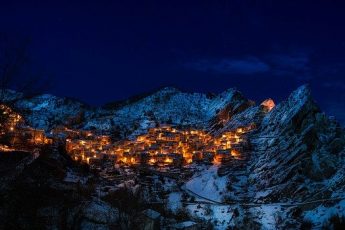Japan is the country of the rising sun. The sun in the center of its national flag as it means perfection, the flourishing of the state. It is a symbol of light, wealth, abundance. Admiration for this country, its achievements, is possible only through its knowledge, penetration into its secrets, understanding of its traditions.
This is the oldest Empire in the world to this day remains mysterious and incomprehensible to other nations. The mysterious Fuji, the temples of Kyoto, magical Tokyo cause admiration and a desire to understand the secrets of the ancient civilization.
Ancient samurai traditions and the latest technologies are intricately intertwined in this country. In fact, Japan has long been in the 21st century, earlier than many other countries.
Japan is an island country located on an arched archipelago consisting of more than 6.8 thousand islands, which stretch along an east coast of Asia with a curved chain of about 3800 kilometers (2300 miles).
The geographical location of the Japanese islands east of the mainland also determined the figurative name of the country – the Land of the Rising Sun.
The name of the country Japan comes from the ancient Japanese “Yamata” – “country of the people of the mountains.” The capital of Japan is Tokyo.The area is 377,973 km2 (145,936 sq mi), 61st in the world.
The population of Japan is 126,317 thousand people
Location of Japan
Japan is a country in East Asia, which is located on 4 large islands. They are Kyushu, Honshu, Shikoku, Hokkaido, as well as the islands of the Ryukyu archipelago and more than a thousand small islands.
In the north it is washed by the Sea of Okhotsk, in the east by the Pacific Ocean and the East China Sea. The Korea Strait and the Sea of Japan are at its west it has t
In the north Japan borders with Russia (Sakhalin, the Kuril Islands), in the south – with the Philippines. It has borders with China and South Korea in the west and north-west.
Administrative division of Japan, which is a constitutional monarchy: the state has 9 regions, 44 prefectures, the capital district and 2 urban prefectures.
The head of the state in Japan is an emperor, but he is mostly a symbol of the unity of the nation and does not have real power.
The highest legislative body in Japan is a bicameral parliament. It includes the House of Representatives, elected for 4 years, and the House of Councilors, whose term of office is 6 years.
The highest executive body of Japan is the Cabinet of Ministers
Largest cities of Japan are Yokohama, Osaka, Nagoya, Sapporo, Kobe, Kyoto, Fukuoko, Kawasaki, Kitakushu.
The official language of Japan is Japanese
Religion of Japan is mostly Shinto, Buddhism and Christianity.
Ethnic composition of Japan: 99% are Japanese, 0.5% are Koreans, 0.5% are Chinese and Ainu. Ainu are remnants of the indigenous population.
The currency of Japan is Yen = 100 Senam
The climate of Japan
In the north of the country, the climate is temperate, and in the south – subtropical and tropical monsoon
Summer is quite hot throughout the country. It is from + 30 ° C (86 °F) in the north to + 38 ° C (100 °F) in the south. In summer, the maximum amount of precipitation falls from 700 mm (28 inches) in the north to 1200 mm (47 inches) – in the south. At the same time air humidity is very high, and typhoons are frequent.
The average temperature in winter is quite low – from – 15 ° C (59.00 °F) on the island Hokkaido. It’s up to – 5 ° C (- 41 °F) on the island Honshu and up to + 16 ° C (60,8 °F) on the Ryukyu archipelago. In this case, a sufficiently large amount of snow falls for such a southern latitude.
Flora of Japan
The flora of Japan is diverse, due to the hot and humid summers in most of the territory. The country has more than 17,000 plant species, of which sakura cherry and plum are considered national. The most common tree is Japanese cedar, larch is also often found, several species of spruce.
Sub-tropical species grow on Kyushu, Shikoku and Honshu: bamboo, camphor laurel, banyan. Deciduous (birch, walnut, willow), as well as a large number of conifers, are widespread in the central and northern parts of Honshu.
Azalea blooms in April and peonies in May. In November, chrysanthemums bloom – the national flower of Japan. This event is annually dedicated to flower festivals.
The fauna of Japan
On the territory of the islands, there are about 140 species of mammals, 450 species of birds, a large number of reptiles, amphibians and fish. There are also such predators, as a brown bear, a black bear, and a red bear.
There are also mink, otter, marten, hare, squirrel, flying squirrel. Among birds one can meet swallows, cuckoos, sparrows, thrushes, ducks, herons, swans, snipes, albatrosses, cranes, woodpeckers, pigeons, pheasants. There are nightingales and bullfinches among songbirds. Some animals are endemic: Japanese macaques, Japanese sika deers.
Rivers and lakes of Japan
The largest rivers are Sinano, Tone, Kitakami, Ten-ri, Mogami on the island Honshu Ishikiri, Teshio, Tokachi on the island Hokkaido, Esino on the island Shikoku.
The largest lake is Biwa which is located on Honshu
Sights of Japan
There are many ancient castles and temples in Tokyo. Bt the way one can also find such interesting places as the National Museum, the Museum of Calligraphy, the National Museum of Western Art, the Museum of Japanese Folk Art, the Treasure Museum of the Meiji Shrine, Tokyo Television Tower 333 metres (1092 feet) high, a zoo.
There are any places to see in Kyoto. For instance: Nijo castle, museums, more than 2000 ancient temples and shrines, the imperial palace, Katsura palace, ancient imperial tombs and much more. An integral part of the culture are traditional Japanese gardens intended for contemplation.
The subject of worship is Mount Fuji, located 90 kilometres (56 miles) west of the capital. There are numerous temples and shrines, as well as a national park on the territory surrounding the mountain.








